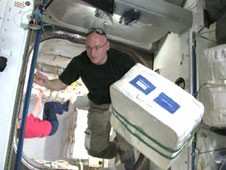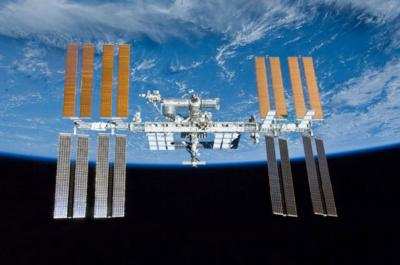First Expedition Crew Began Stay In 2000
For 15 years, there have been people living in space aboard the International Space Station, a milestone marked by both NASA and the White House Monday.

The first station crew, docked Nov. 2, 2000 after launching two days earlier inside the Soyuz TM-31 spacecraft.
The young space station at the time consisted of just three modules including the Zarya module, the Zvezda service module and the Unity module. Commander William Shepherd and Flight Engineers Sergei Krikalev and Yuri Gidzenko spent 141 days in space, saw two space shuttle missions and the addition of a solar array truss structure and the U.S. Destiny laboratory module.
The current six-member crew, Expedition 45, consists of NASA astronauts Scott Kelly and Kjell Lindgren, Japanese astronaut Kimiya Yui and veteran cosmonauts Sergey Volkov, Mikhail Kornienko and Oleg Kononenko. Kelly and Kornienko are spending nearly a year in space.
The crew worked a wide variety of lab maintenance and advanced science exploring how life adapts to long-term space missions with potential benefits to Earth-bound humans and future astronauts. Today they researched new exercise techniques and how living in space affects a crew member’s attitude.
The crew also explored how the station’s habitat affects the orbiting resident’s mental state and how lack of sleep and fatigue affects a crew member’s cognition. Another ongoing experiment that took place today researched the dynamic loads the space station experiences during spacecraft dockings, spacewalks and even crew exercise.

"Over the weekend, I called NASA astronaut Scott Kelly (pictured), who is currently halfway through his one-year mission aboard the International Space Station, to congratulate him on setting the American records for both cumulative and continuous days in space," said NASA Administrator Charles Bolden in a prepared statement.
"I also took the opportunity to congratulate Commander Kelly -- and the rest of the space station crew -- for being part of a remarkable moment 5,478 days in the making: the 15th anniversary of continuous human presence aboard the space station.
"I believe the station should be considered the blueprint for peaceful global cooperation. For more than a decade and a half, it has taught us about what’s possible when tens of thousands of people across 15 countries collaborate to advance shared goals.

"For 15 years, humanity’s reach has extended beyond Earth’s atmosphere. Since 2000, human beings have been living continuously aboard the space station, where they have been working off-the-Earth for the benefit of Earth, advancing scientific knowledge, demonstrating new technologies, and making research breakthroughs that will enable long-duration human and robotic exploration into deep space."
"The International Space Station is a unique laboratory that has enabled groundbreaking research in the life and physical sciences and has provided a test bed for the technologies that will allow NASA to once again send astronauts beyond Earth’s orbit," said Dr. John Holdren, director of the White House Office of Science and Technology Policy. "The international partnership that built and maintains the Station is a shining example, moreover, of what humanity can accomplish when we work together in peace.
"I congratulate all of the men and women at NASA and around the world who have worked so hard to keep the International Space Station operational these past 15 years. Everyone involved can be proud of this incredible achievement."
(Images provided by NASA. Top: Expedition 1, the first space station crew, poses inside the Zvezda service module with a model of the young International Space Station. Pictured in December 2000 (from left) are Commander William Shepherd and Flight Engineers Yuri Gidzenko and Sergei Krikalev. Center: Scott Kelly. Bottom: file)
 ANN's Daily Aero-Term (04.25.24): Airport Rotating Beacon
ANN's Daily Aero-Term (04.25.24): Airport Rotating Beacon ANN's Daily Aero-Linx (04.25.24)
ANN's Daily Aero-Linx (04.25.24) Klyde Morris (04.22.24)
Klyde Morris (04.22.24) Airborne 04.24.24: INTEGRAL E, Elixir USA, M700 RVSM
Airborne 04.24.24: INTEGRAL E, Elixir USA, M700 RVSM Airborne 04.22.24: Rotor X Worsens, Airport Fees 4 FNB?, USMC Drone Pilot
Airborne 04.22.24: Rotor X Worsens, Airport Fees 4 FNB?, USMC Drone Pilot





